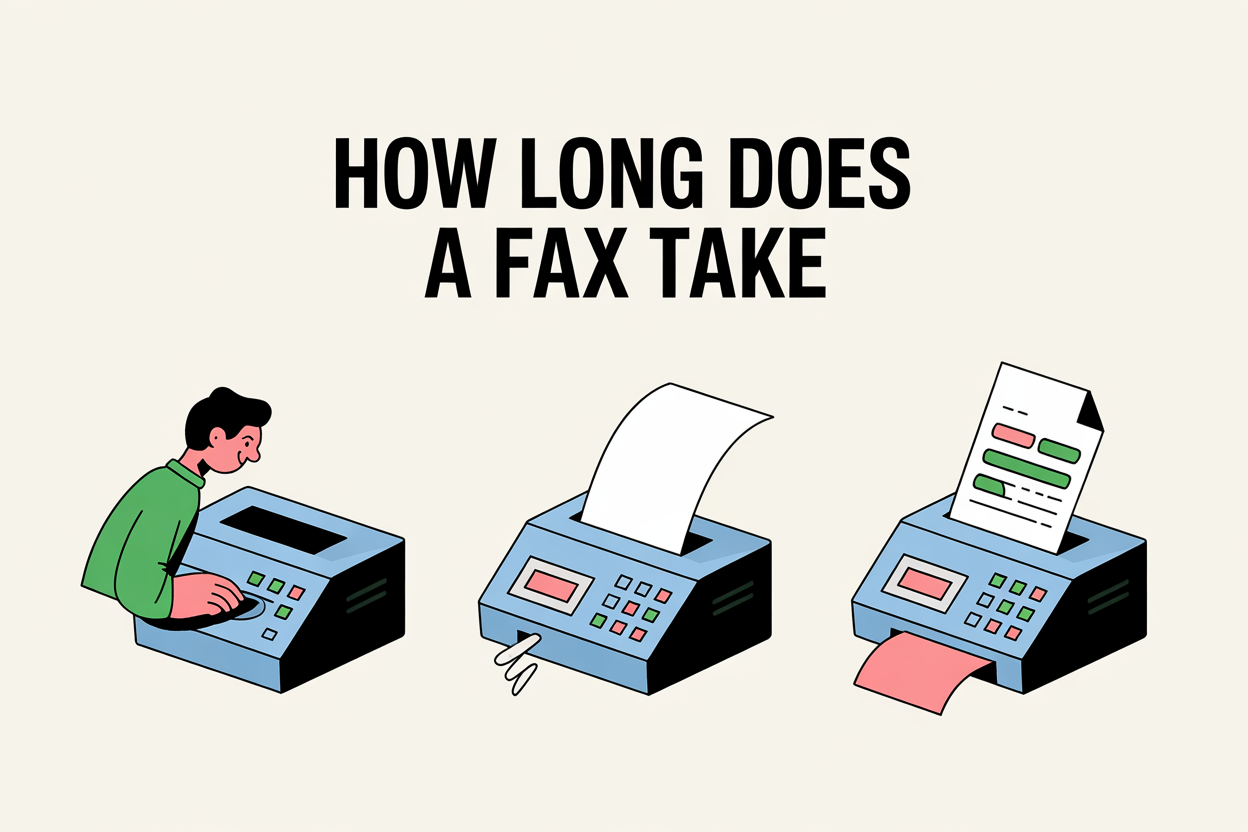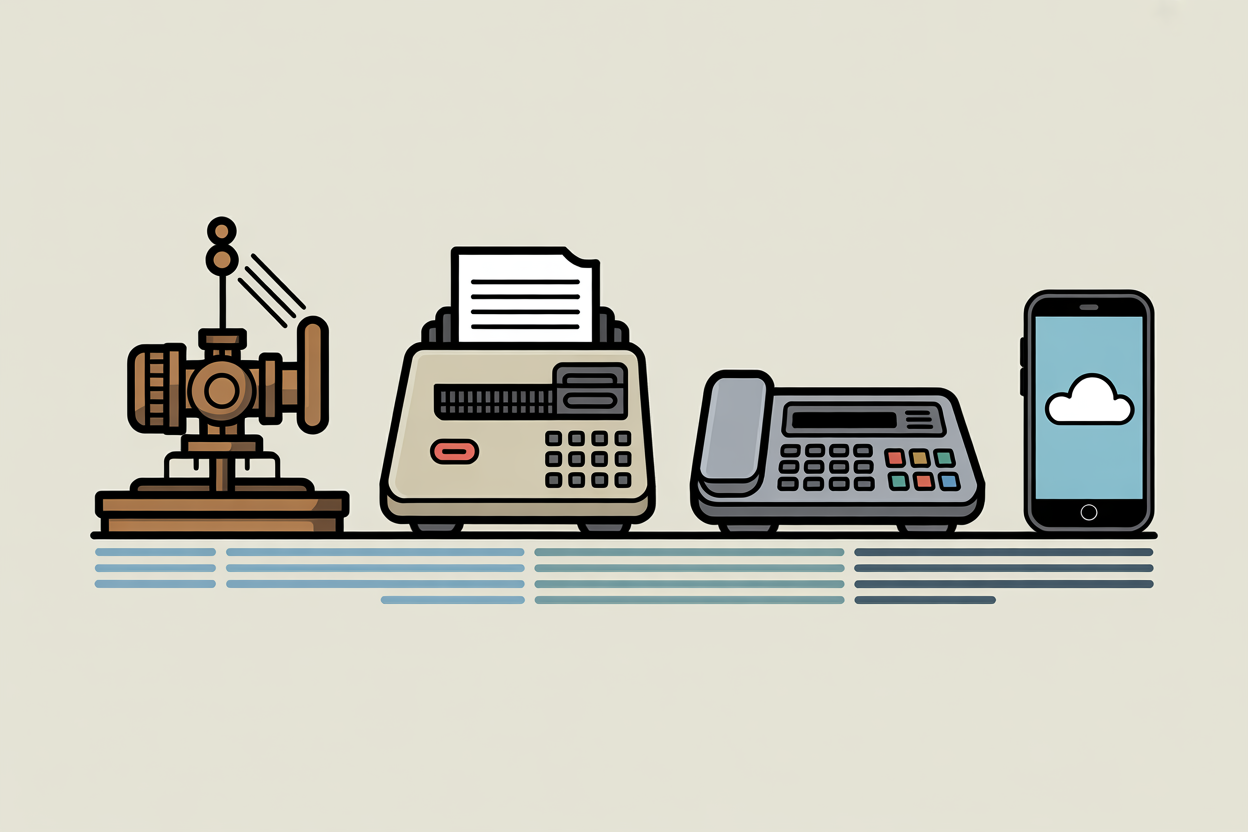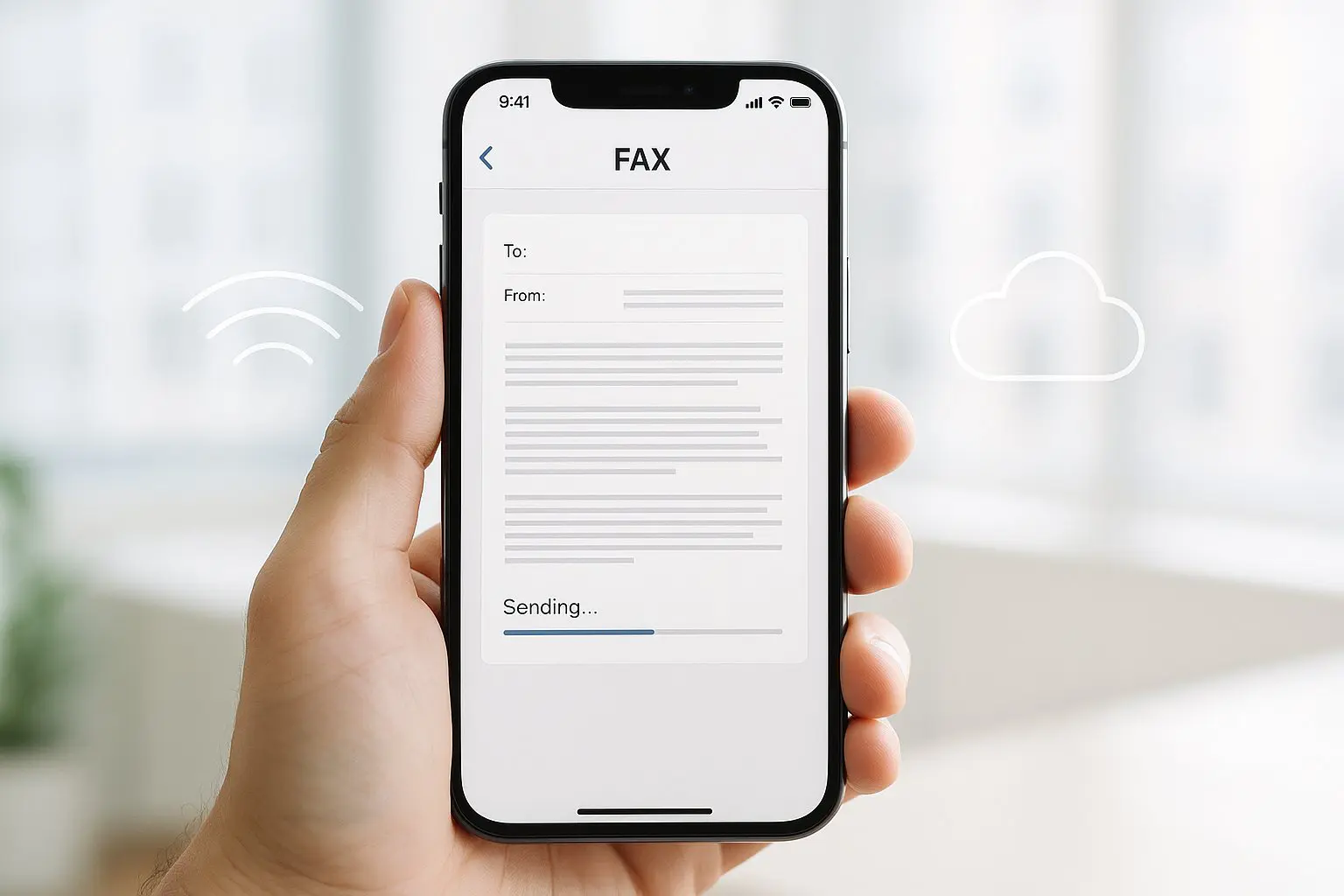Nobody wants to waste time hanging around waiting for a fax to send—especially when there’s a deadline or someone’s health paperwork on the line. Most faxes take about 30 seconds to two minutes per page, meaning a short document is usually on its way before you’ve even refilled your coffee cup. For those wondering about the full rundown, longer or image-heavy files might stretch things out, but even then, it’s typically just a few extra minutes.
Honestly, it’s pretty neat how faxing has evolved from bulky, whining machines to fast, almost-invisible software like Municorn Fax. But why do some faxes breeze through while others lag behind? It’ll make you rethink how a little thing like phone line quality can shape your day—almost like waiting in a slow line at the grocery store, except with medical records or legal docs hanging in the balance.
If you’re sending something urgent, it pays to know how fast your message will get there. Still, it’s not just speed that matters—it’s reliability, too. That’s a big reason so many offices (and busy folks at home) keep fax in their mix, even in the age of email and instant messaging. Want to see what actually affects that ticking clock? Stick around. Or hop over to see more details in this easy breakdown at how long a fax takes to send.
How Long Does a Fax Take: What Affects Fax Transmission Speed
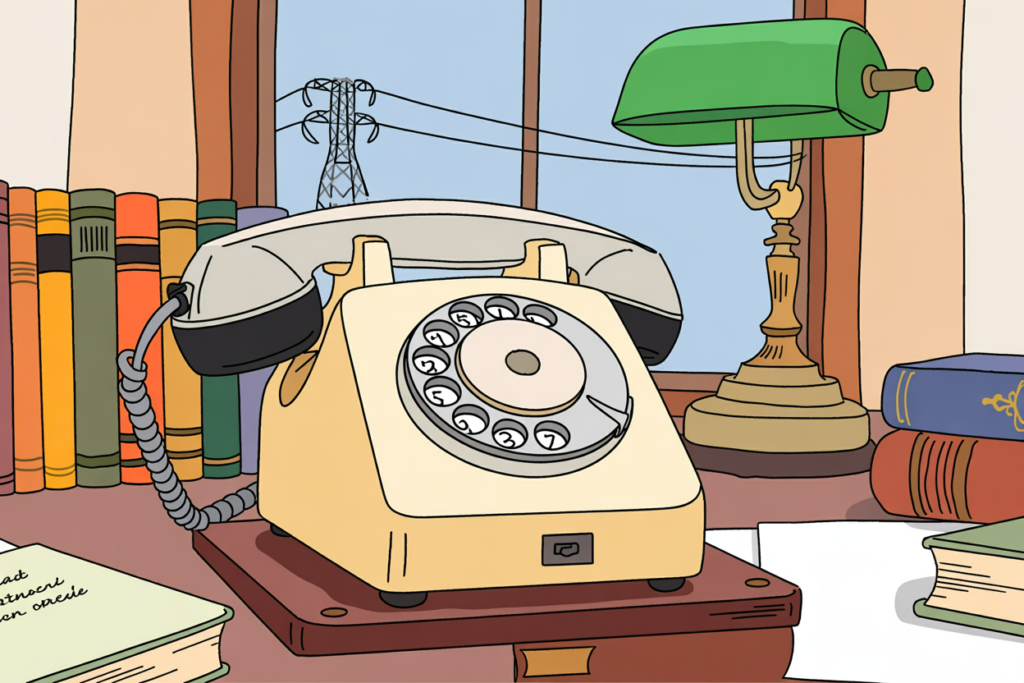
Fax speed matters more than most think. Whether someone’s in a rush to send medical records or they’re getting paperwork approved for a loan, every minute adds up. It helps to know what influences the wait, from how fast a page moves through a fax machine to the sneaky factors that trip things up—like blurry documents, a crowded phone line, or the older technology used in traditional fax machines, which can contribute to slower processing times.
Typical Timeframes for Sending a Fax
On average, a single page fax takes about 1 minute to send, though it can sometimes sneak a bit faster or slower depending on the setup. This estimate assumes the page isn’t overloaded with graphics or color, which can slow things down. If you’re sending several pages—say, a 10-page contract—the total time stacks up, so it may take anywhere from 10 to 15 minutes. Traditionally, faxing works by scanning the document, converting it into data, transmitting it through a phone line, and then receiving it as a printed document.
Online fax services, such as Municorn Fax, sometimes process documents a bit quicker by skipping the physical phone line. Instead, the file moves through the internet, and that’s handy if time is tight. Still, technical hiccups or large file sizes can add a few extra minutes. For most people using traditional fax machines with a regular phone line, the average remains steady around 1 to 2 minutes per page.
Factors That Affect Fax Delivery Time
Several things can stretch or shrink the time it takes for a fax to land safely. The type of fax machine or fax service used is a big one—newer machines process pages much faster, while older units can slow the pace. Using high-quality fax machines or internet-based fax services can result in faster transmission. Phone line quality is another key piece; a clear, unused line means faster transmissions, but static or shared lines (those that use the same line for calls and faxes) can disrupt the process.
Document detail also plays a role. Dense images or tiny print mean more data to send, which drags out the transfer. Complex documents with intricate graphics or high-resolution images require more time to send. Then there are peak hours—just like rush hour on the highway, faxing during busy times might hit a traffic jam, especially in offices with frequent faxing needs. Lastly, every fax needs a little patience when it comes to connection errors or redial attempts; even the best fax services sometimes hit a glitch and try again, nudging that delivery clock upward.
Methods of Sending a Fax and Their Impact on Time
Fax speed changes a lot depending on the type of technology used, the quality of the connection, and which fax service or provider is chosen. Small technical choices—like how a fax machine connects, or which online fax platform is used—can make a big difference in wait times and reliability. Factors such as poor connection quality, large file sizes, or busy phone lines can cause delays in the faxing process.
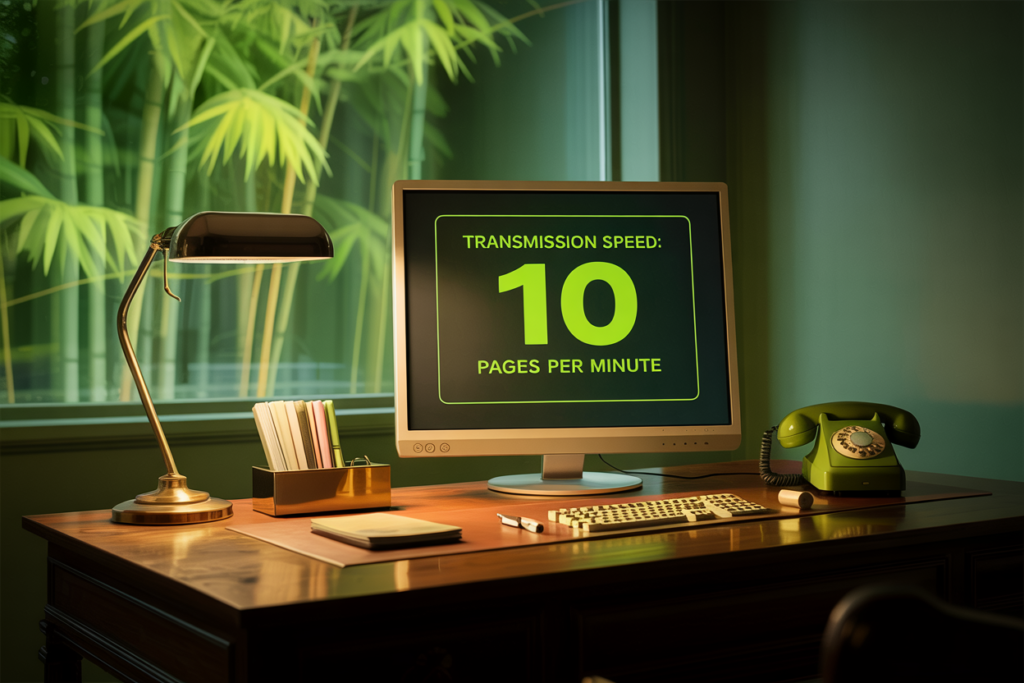
Using an online fax service can significantly reduce the time it takes to send and receive faxes. These services often integrate with cloud storage, allowing for instant storage of incoming faxes, which enhances efficiency.
Traditional Fax Machines vs. Internet Fax
Traditional fax machines work by scanning the document and sending the data through a phone line to another fax machine. Usually, this takes about 30 seconds to 1 minute per page, depending on the model and the line quality. People still use these machines in some offices but they’re less common now, mostly due to how slow and finicky they can be.
Internet fax, on the other hand, uses email or apps to send faxes over the internet, which means the whole process is digital from start to finish. This method is usually faster; average times can range from 30 seconds to 2 minutes a page but often fall on the quick end, especially if both sender and receiver use reliable connections. Using an online fax service enhances efficiency and convenience, allowing users to send documents from any location with internet access.
Digital faxes don’t need paper, toner, or phone lines, and that takes away some of the old headaches. Online platforms like Municorn Fax now let users send a fax straight from a phone or laptop, making it not only quicker but also easier to manage. Plus, if you suddenly need to send a 10-page contract at midnight, you’re not stuck waiting in line at a copy shop. Online fax services can also reduce delays associated with fax taking during busy periods, such as tax season, by providing more reliable and faster transmission.
Role of Phone Lines in Fax Transmission
With old-school fax machines, the phone line is everything. If there’s static, weak connections, or a busy signal, the document might take forever to go through—or not send at all. Phone lines can slow down fax transmission, especially when they’re shared with other equipment or used in areas with outdated wiring. Connection quality is crucial for determining fax transmission speeds, as poor connections can lead to significant delays.
Modern digital fax services skip phone lines entirely for sending documents, so they don’t suffer from the same delays. But if you’re stuck using a traditional fax, the speed depends heavily on these factors:
- Quality of the phone connection (clear, strong lines work better)
- Distance between sender and receiver (international numbers often mean more pauses)
- Other activity on the line (faxing at home? Someone picks up another phone and—oops—the connection drops)
It might sound a bit dramatic, but anyone who’s dealt with dropped faxes knows how one bad phone line can turn a five-minute job into a frustrating hour.
Influence of Fax Services on Speed
The fax service or platform a person chooses can shape how fast and smoothly their fax is sent. Online fax services, for example, handle large file sizes much more efficiently than old fax machines. Many modern services process faxes in about 30 seconds to 2 minutes per fax, depending on their backend systems and how crowded their servers are. Several factors, including the quality of the fax machine, phone line condition, and document size, influence fax speed.
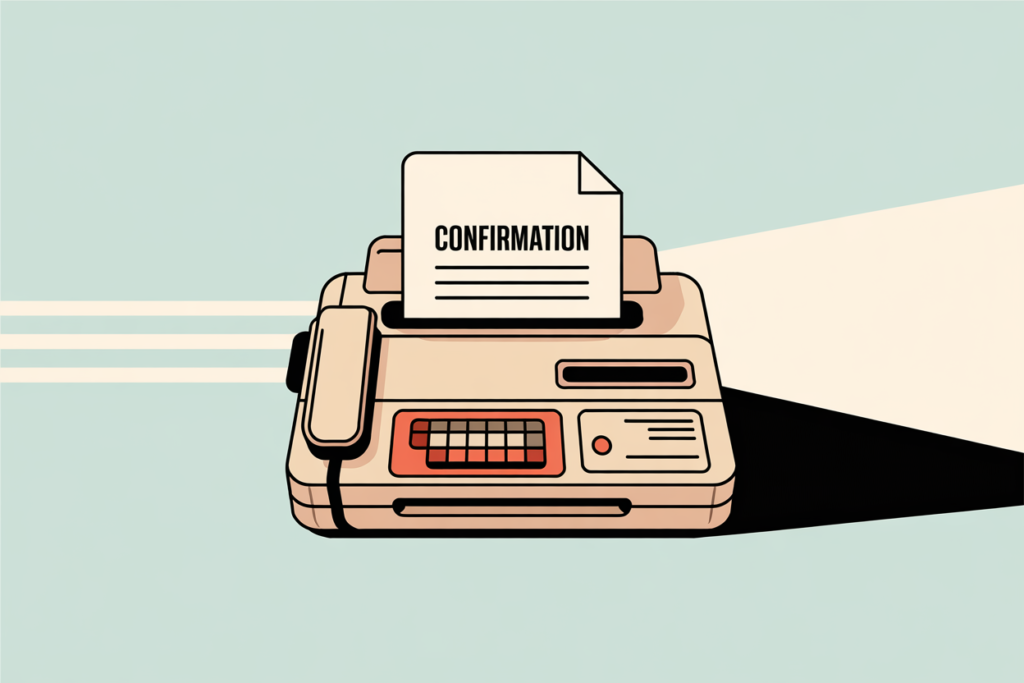
Features such as file compression, instant delivery notifications, or integration with email can speed up turnaround times too. Some services queue documents during busy periods, while others offer dedicated sending paths for business accounts—which means less waiting.
Not every fax service is created equal. For fast, reliable faxing, it helps to use a platform with a solid reputation and speed guarantee. Folks who stick with paper faxes, by contrast, may find they’re stuck watching that slow page crawl through again and again. If speed matters, digital fax services will almost always zap docs faster, no contest. And as more people move their offices online, that difference in speed only gets more noticeable—especially on a deadline or during tax season, when a lost minute can mean a lost opportunity.
How Document Type and Size Affect Fax Speed
The kind of file a person faxes—and how big it is—makes a real difference in how quickly it travels from sender to receiver. A clear, single-page text file isn’t the same as a stack of blurry photos or a lengthy contract full of tables and logos. Some fax services provide email confirmation to notify users about their fax delivery status, ensuring reliability and enhancing the overall user experience.
Common File Formats: PDF, TIF, JPG, TIFF
Not all files are created equal. When people send a fax, they often work with formats like PDF, TIF, JPG, or TIFF. Each comes with its own quirks and perks.
PDF files are very common. They often compress content well and support both simple and complex layouts. This means a crisp black-and-white text PDF usually flies through a fax line faster than a color photo.
Now, talk about TIF and TIFF—they’re practically twins. These formats are known for high-quality images but can get bulky, especially if the document has detailed graphics. Big image files like these might slow down faxing, especially if they’re loaded with color or intricate designs.
JPG is a mixed bag. It’s great for photos, especially since it compresses images to make the files smaller. However, too much compression leads to smudgy or fuzzy results; the receiving end might not get every detail clearly.
People still fax DOC files (those old-school Word documents), but they typically get converted to PDF or image format before being transmitted. That conversion process can impact speed, especially if the original file had loads of fonts, colors, or embedded pictures.
Additionally, sending faxes during peak business hours can lead to slower transmission times due to network congestion.
Impact of Document Complexity and Length
Let’s face it, a fax with just a few simple sentences will shoot through the system much faster than a 20-page lease packed with signatures, color highlights, or diagrams.
Fax machines send data one line at a time. The more lines there are—think bigger files or longer documents—the longer it takes. Complexity means lots of fonts, color shading, images, tables, or even handwritten notes. A document filled with tables or graphics can bog things down, especially if every page is loaded with rich media. Using a physical fax machine for sending such complex documents can be particularly cumbersome and time-consuming.
Here’s a quick rundown of what can make a fax crawl:
- Multi-page reports (5+ pages)
- High-resolution scans/photos
- Heavy use of colors and logos
- Densely packed text
Simple, black-and-white text files send much faster. But there’s a catch—sometimes even short documents seem to lag if the connection isn’t great.
A final reality check: fax speed isn’t just about size. Connection speed, error correction, and even paper jams (if you’re still using a physical machine) can get in the way. But when people fax online or use a modern service, most of these headaches melt away.
Troubleshooting Common Fax Delays
Fax delays frustrate just about everyone, especially in places where timing really matters, like medical offices or law firms. Despite the complexity of the underlying technology, the act of sending a fax is a simple process for users. Solving issues quickly means knowing if the trouble is the fax number, the phone line, or maybe just a hardware glitch.
Connection Issues and Phone Line Problems
Spotty phone lines are one of the leading causes of delayed faxes. If static crackles on a call or an old splitter sits between the fax machine and the wall, that’s asking for trouble. Even in modern setups, digital phone lines or VoIP services sometimes break up transmissions, causing missed or incomplete pages.
Busy signals and dropped calls also play a role. Some fax machines will retry if the line is busy or interrupted, but each attempt eats up precious minutes. Peak times—like right before lunch or end of workday—tend to clog up phone lines more, slowing things down for everyone.
It helps to double-check the phone line connection for noise or interruptions. In offices, using fax-dedicated lines often speeds up the process. Honestly, if these older systems trip up too often, switching to an online fax platform like Municorn Fax gives much steadier results, as there’s no old-school phone line to fuss over. Additionally, online fax services allow you to send faxes conveniently using your mobile device, providing flexibility and accessibility.
Hardware and Software Error Sources
Hardware issues might sound old-fashioned, but they’re still relevant. Heating problems, paper jams, or low toner irritate even the most patient people. Sometimes, the fax machine itself just needs a reboot, especially when it’s processing a large batch of documents. One loose cable or a slight wrinkle in the paper feed can cause a snag.
On the software side, glitches are less obvious but just as real. Outdated firmware, missed software updates, or drivers that clash with new operating systems will make even the fanciest multifunction printers throw up error codes. Digital error logs on modern machines often point to the hiccup, but older devices might just blink a red light and not say much else.
Troubleshooting here means running basic tests: check connection status, reboot the device, and update the relevant software. If problems persist, switching to an online system can sidestep these headaches—their updates happen behind the scenes, and the risks of hardware failure drop to almost zero. Online faxing offers additional advantages over traditional methods, such as increased speed and convenience, as documents are sent and received quickly through internet connections, eliminating the need for physical fax machines and complex setups.
Fax Number Mistakes
Believe it or not, the simplest errors sometimes cause the biggest delays. A single digit off in a fax number sends the document into oblivion—or, awkwardly, to the wrong business. Invalid or missing area codes can also mess things up, causing either instant failure or mysterious overnight delays. The process and timing involved in receiving faxes can vary, typically ranging from half a minute to several minutes, depending on factors like the sender’s fax machine type and the quality of the phone line.
To avoid the headache, always double-check the fax number before sending. Using a preprogrammed contact list, especially in offices, drastically reduces human error. Some cloud fax platforms even highlight likely mistakes or refuse to send with incomplete numbers, saving time and embarrassment.
If there’s a sudden problem where none existed yesterday, confirm the recipient’s fax number (or check if their machine is working on their end). One small typo or forgotten prefix can mean the difference between instant delivery and endless wondering.
Frequently Asked Questions
Fax delivery times can shift based on factors like the number of pages, connection strength, and type of fax service used. While most faxes are delivered pretty quickly, certain processes—like sending medical records or waiting for a referral—may introduce brief delays. Using an online faxing service can enhance efficiency and flexibility, allowing users to send and receive faxes from various devices with potentially faster transmission times.
What is the typical duration for receiving a fax?
Most single-page faxes land on the other side in under a minute or two. This goes for both old-school fax machines and internet-based platforms. If someone’s faxing lots of pages—picture a full contract or report—it might stretch out to five minutes or so, especially if the fax line is busy or the files are large. Additionally, network congestion during peak business hours can affect fax transmission times, leading to slower processing and reception of faxes.
What is the time frame for faxing medical records effectively?
Faxing medical records is rarely instant, even though the actual transfer only takes a few minutes. In a clinic or hospital, staff may batch documents or have extra security checks—which adds a bit of a wait. Factors affecting transmission times include document size and network quality, which can impact the speed of sending faxes. Typically, a patient can expect the files to reach the receiving provider within a few minutes up to an hour, depending on workflow. There are instances, like faxing medical records, where it takes longer if the recipient’s office is especially busy or slow to check their faxes.
How long should I expect to wait for a fax referral to be processed?
Fax referrals are usually sent in only a few minutes, but processing on the recipient’s end can drag things out. Clinics sometimes sort through referrals in batches. If it’s after hours or the office is backlogged, the referral may sit for a few hours or even until the next business day before someone reads it. Modern solutions allow users to receive faxes directly into their email inbox almost instantly, eliminating delays associated with traditional fax machines and enhancing efficiency.
What is the estimated time for an efax to be delivered?
Electronic fax, or efax, platforms like Municorn Fax, deliver documents almost immediately—sometimes within seconds. Sometimes minor technical hiccups (like limited internet or heavy traffic on the fax service) can delay things by a minute or two. The exact time required for an efax to be delivered can be influenced by factors such as the quality of the internet connection and the current load on the fax service. For most users, though, delivery is so fast it feels close to instant.
Can the distance affect the fax transmission time?
Surprisingly, distance rarely matters with fax. Whether sending to a local clinic or overseas, modern fax services use digital networks that don’t slow down much over long distances. However, using a slow fax machine for long-distance transmissions can significantly hinder the process, especially in time-sensitive industries like healthcare and legal. The actual difference tends to be seconds, not minutes—unless someone is using analog phone lines in a rural area, which can introduce random delays.
What are the methods to verify receipt of a fax?
Confirmation is a big question for anyone sending sensitive or important documents. Most fax machines print a confirmation page when a fax goes through. Online services send an email or show a digital receipt. A few factors that influence fax speed, such as transmission speed (baud rate), document size, and internet connection stability, can impact the efficiency of sending faxes and the verification process. For big, business-critical documents, some people like to check in with a phone call, just to be 100% sure nothing went missing in the shuffle.

